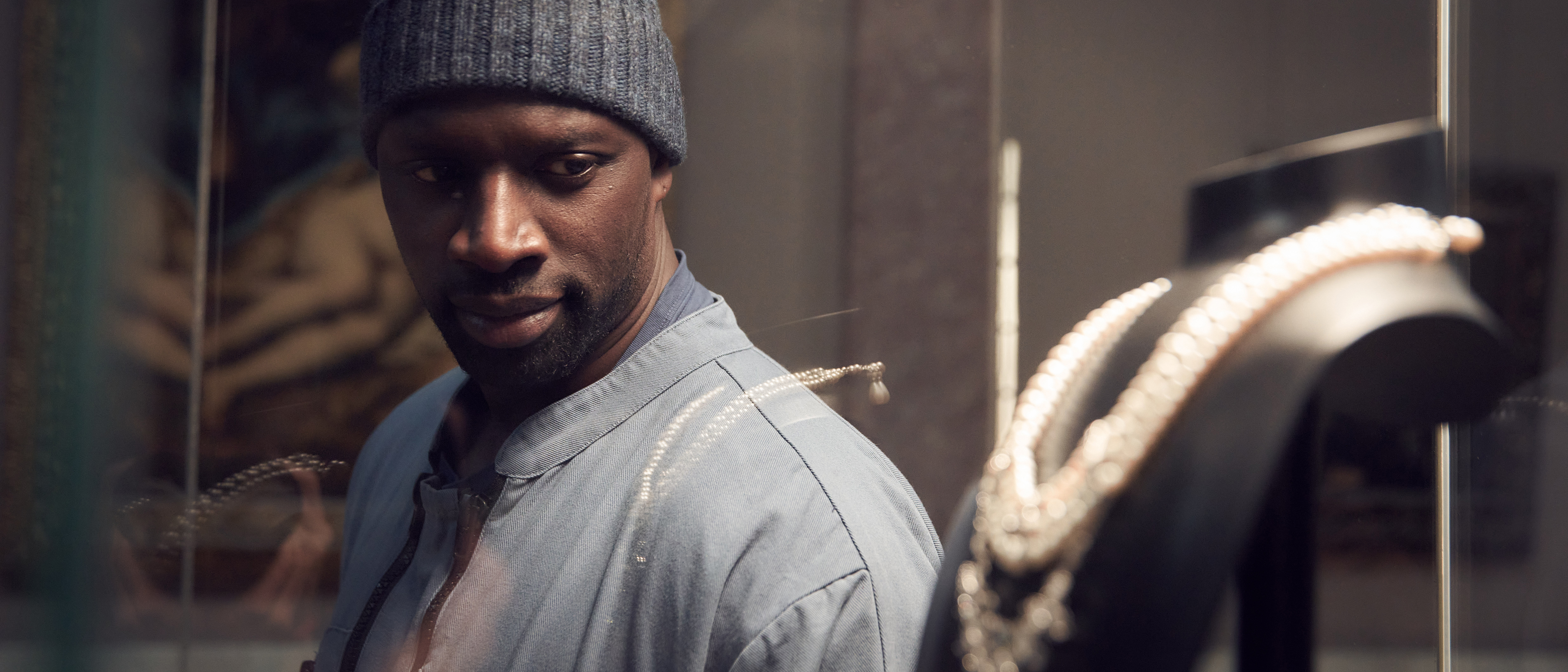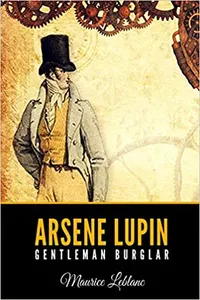What to Watch Verdict
A tragic tale of revenge and redemption is expertly told through the first five episodes of this French series on Netflix.
Pros
- +
💎 Everyone loves a good heist story.
- +
💎 The generational twists of father and son are touching.
- +
💎 Plenty of breadcrumbs to follow in the plot.
Cons
- -
🚨 You know it'll work out and everything is going to be OK. Probably.
- -
🚨 The first five episodes are over too soon!
Netflix series, particularly those that magically appear on its Top 10 list, can be extremely hit and miss. Lupin — a French-language series from George Kay and François Uzan that dropped in January 2021 — is very much the former. The series is slated for 10 episodes. We have the first five now, and the second five are due to drop in the summer of 2021.
The gist is this: Assane Diop (Omar Sy, who you might remember as Barry from Jurassic World but certainly won't from his small roll in X-Men: Days of Future Past) is a thief. But he's also what you'd call a gentleman thief, and one who's mirrored his life after Arséne Lupin, a gentleman thief in a series of stories born in the early 1900s from French author Maurice Leblanc. Diop and his father, Babakar, immigrated from Senegal. Babakar worked as a chauffeur and assistant for a rich and powerful man, who ultimately accused Babakar of stealing a necklace once owned by Mary Antoinette, worth millions. Babakar hanged himself in prison. And 25 years later, Assane sets out to uncover what really happened — and to avenge his father's death.
You don't have to be familiar the stories of Lupin (I wasn't), or know any French at all (I have enough to be pleasant on an Air France flight) to enjoy the hell out of this series and be eagerly awaiting the second half.
The Netflix series "Lupin" is based off the character from the book Arsene Lupin, Gentleman Burglar, by French author Maurice Leblanc. He's a thief who can get out of any situation. But above all else, he's a gentleman.
There's a good chance that if you've seen the trailer for Lupin, you've seen it dubbed in English. (Which is what we're giving you above.) And that's a shame. Because like La Casa de Papel or Parasite, the language gives another layer of depth to what you're watching. The character Lupin was French. Assane Diop is decidedly French. Same goes for Omar Sy and every other actor and character in the five episodes thus far. Overdubbing Lupin in English makes it feel like an Ocean's 12 or a spinoff of The Thomas Crowne Affair (and maybe a little James Bond and Sherlock Holmes).
But that doesn't do justice to anyone. Lupin stands on its own here.
And that's why we're drawn in from the start, with a good looking janitor named Perenna Luis doing his janitorial thing at the Louvre. He's also obviously casing the joint, admiring the artwork. That's especially true of the Queen's Necklace, which recently surfaced some 25 years after having disappeared following a burglary at compound of the Pellegrini family. The necklace was believed to have been stolen and dismantled. But now that it's been found, it's going to be shown at the Louvre for a couple weeks, and then auctioned to fund a new Pellegrini Foundation.
The necklace is expected to fetch something like $20 million. And Luis Perenna — which is an anagram for Arséne Lupine, if you haven't noticed already — is going to steal it. That's good, because Luis Perenna also owes money to some really unpleasant people, and he just gave what he had to his ex-wife, Claire (Swimming Pool's Ludivine Sagnier) as alimony and child support. (Along with a cleverly and discreetly folded origami flower, which simultaneously shows you the current state of their relationship, as well as where it's ultimately headed.) Luis needs the henchmen's help to steal the necklace, and they're plenty willing to get a cut of that $20 million.
The latest updates, reviews and unmissable series to watch and more!
Meanwhile, we start getting the backstory in flashbacks. Babakar and Assane (who we now know in adulthood as Luis Perenna) are seen in Paris in 1995. Babakar has started work as a driver for Monsieur Hubert Pellegrini and spots Madame Anne Pellegrini (Nicole Garcia) having car trouble in the rain. She doesn't recognize him, though, and immediately locks her door, because it's a nice older Black man offering to help and must certainly be a threat. Babakar explains that he just started as her husband's chauffeur, and then she recognizes him.
You could maybe chalk that up to seeing someone out of context. We've all done it. But that's our first taste of the all-too-realistic racial (and immigrant) issues that still abound today. And while they don't play a huge role in Lupin, they're always lingering. Subtle, but very much there. He's nice, but what does he want?
Babakar gets the Volkswagen Rabbit convertible started again and insists that he drive Madame home. It is, after all, what he does. "You know what your father is?" she asks Assane. "A gentleman." And she's right. Fargass Assandé plays the character brilliantly. He's a man who will give anything for his teenage son to have a better life, which is why they're in Paris to begin with. He's world-weary but hard-working. And he introduces Asanne to the world of Arséne Lupin, gentleman thief, and Asanne is immediately enamored by the character.
You immediately see the relationship of Babakar and Assane mirrored in Assane and his own teenage son, Raoul. Assane was about the same age as Raoul when we see him first meet the Pellegrini daughter Juliette (Clotilde Hesme). She's lounging at the pool and smoking cigarettes when the younger Assane inches into the water, permitted by Madamme to take a dip. She asks Assane if what she "heard about Black people true — Black people can't swim?" If he proves her wrong, "I'll kiss you. A real kiss. Not like your mother's."
OK. So maybe those racist undertones aren't quite so subtle. And let's toss in some classism for good measure.
Assane says that of course he can swim. He slips into the and sets off toward Juliette — and barely manages to dog-paddle his way there. He gets his kiss, though, which only makes the whole thing worse.






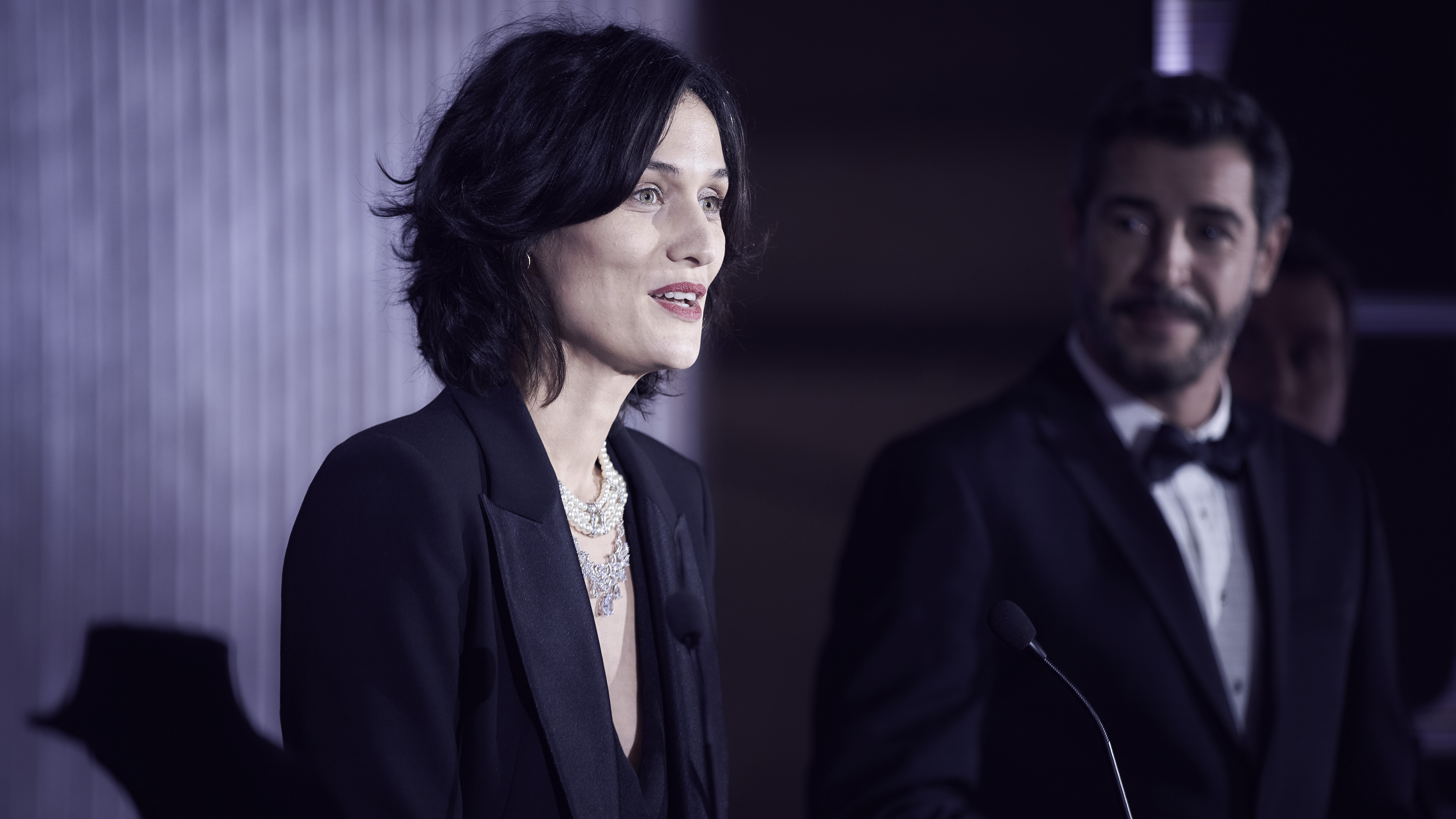

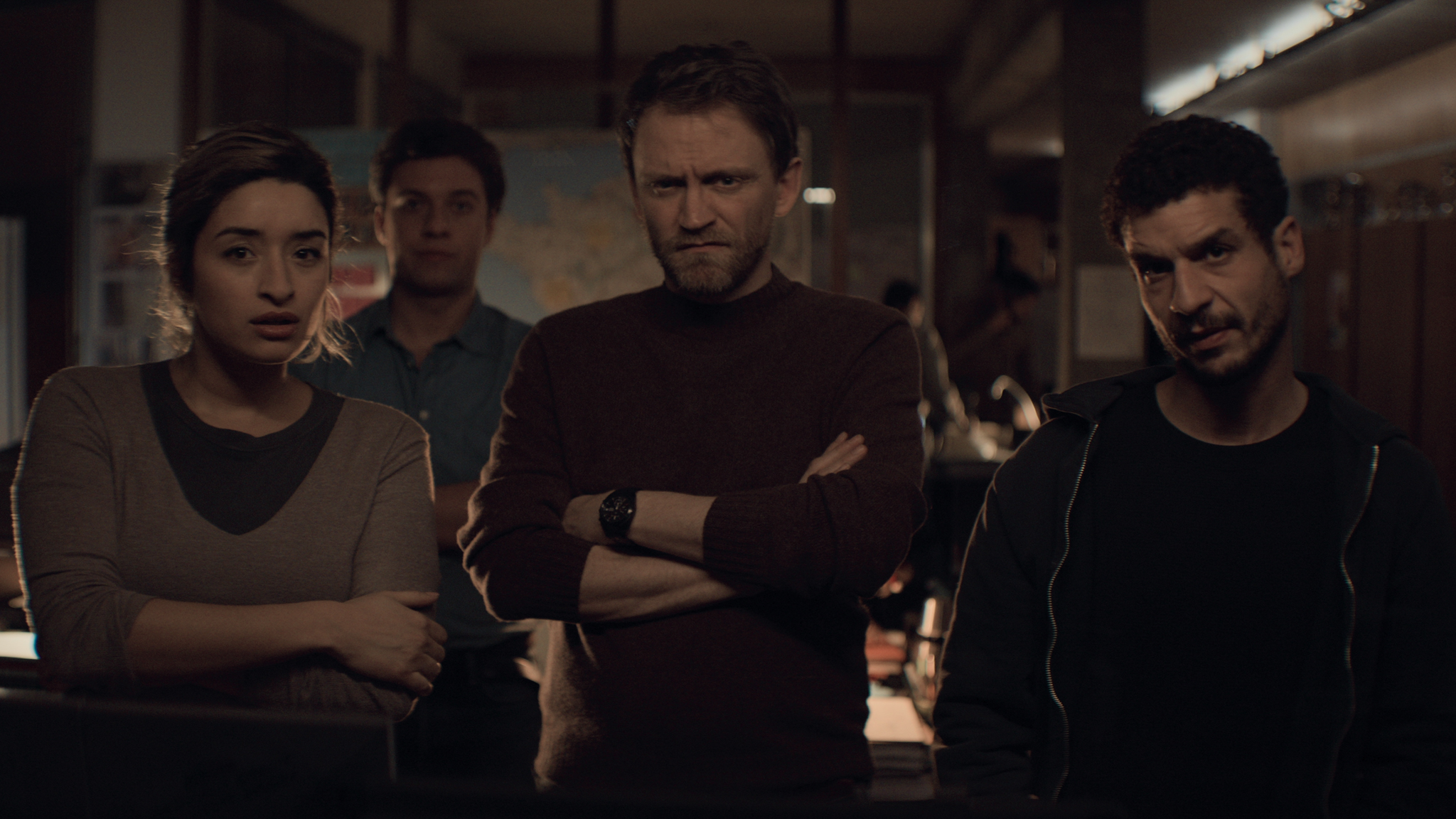
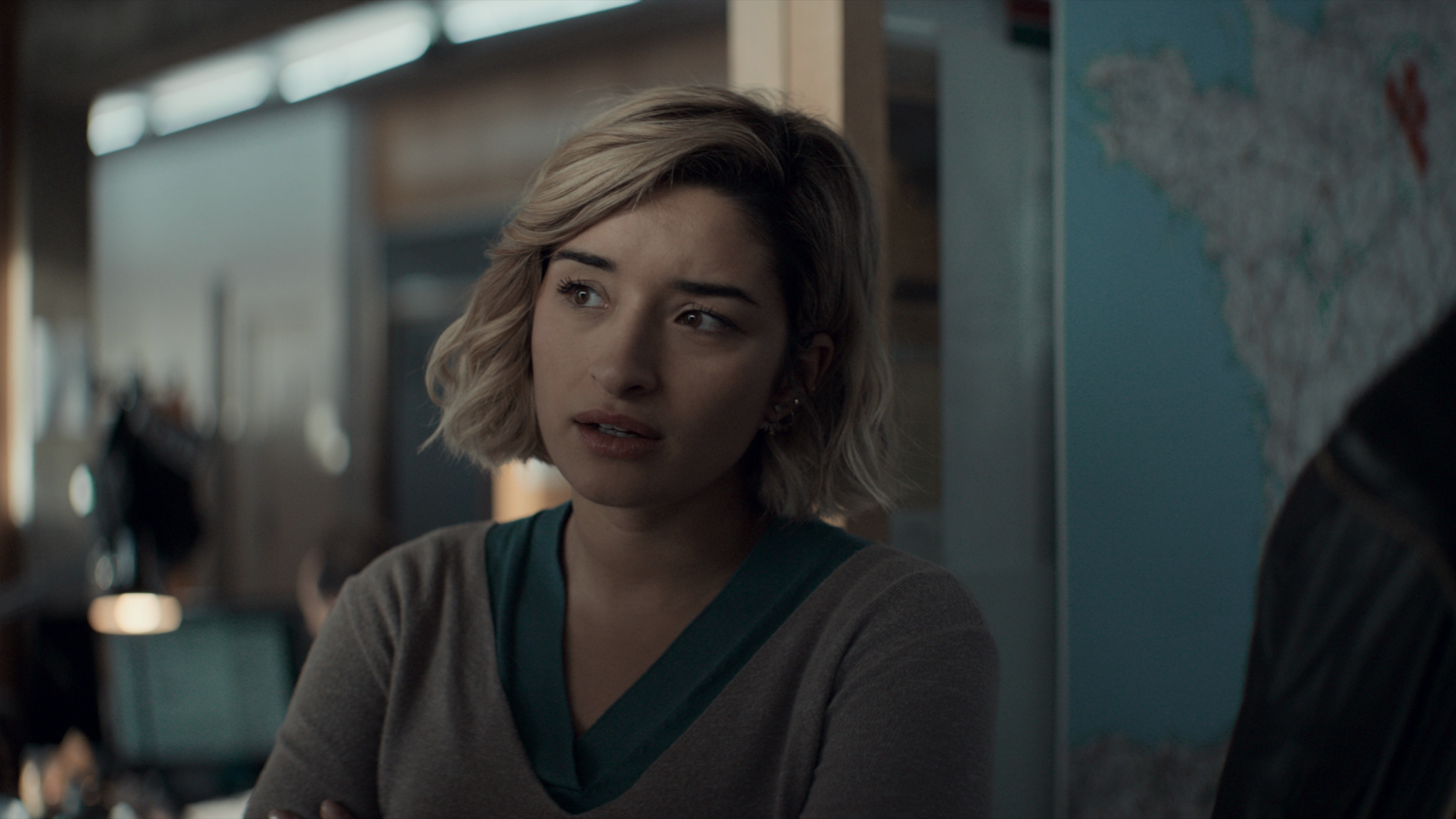
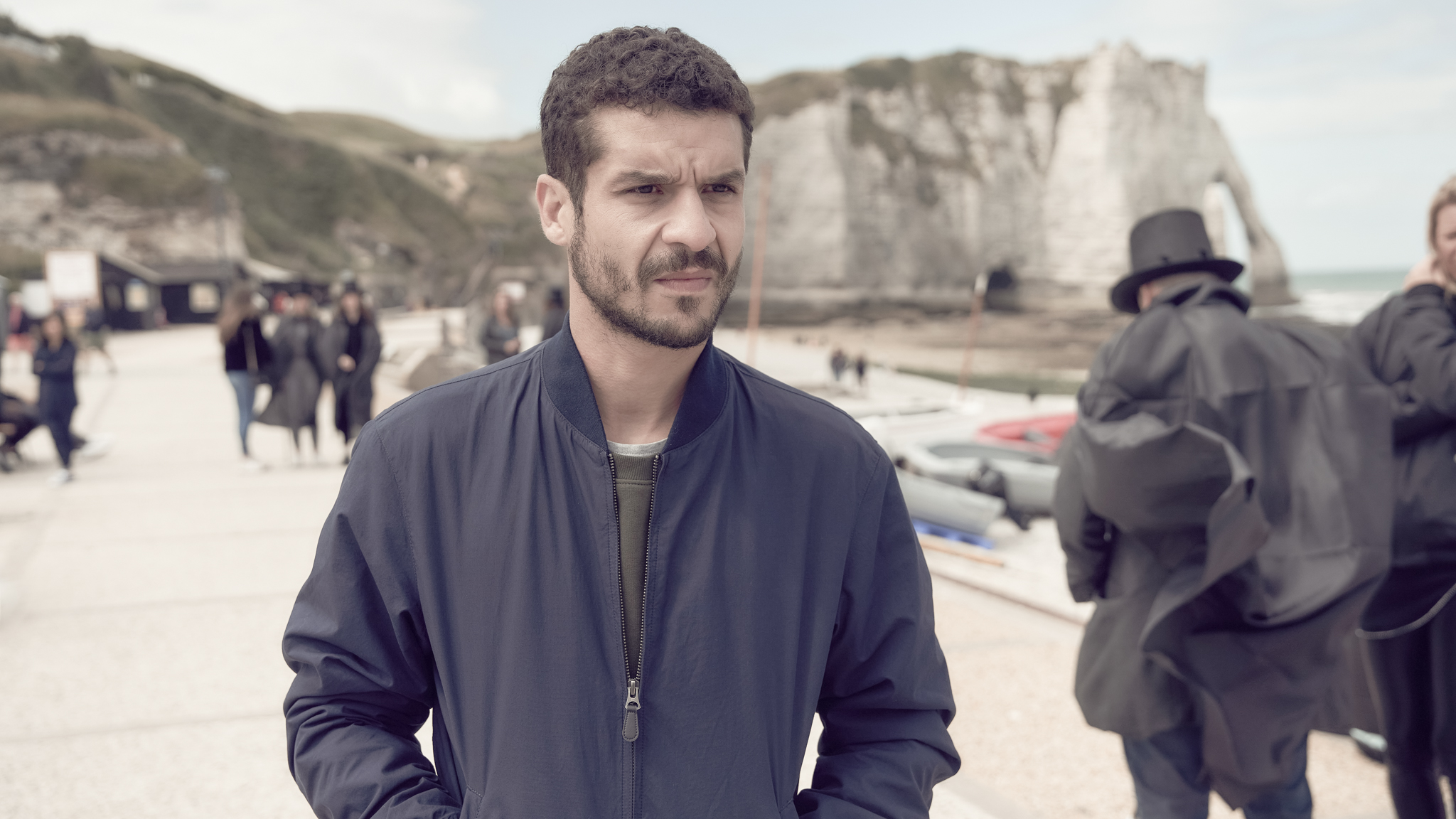
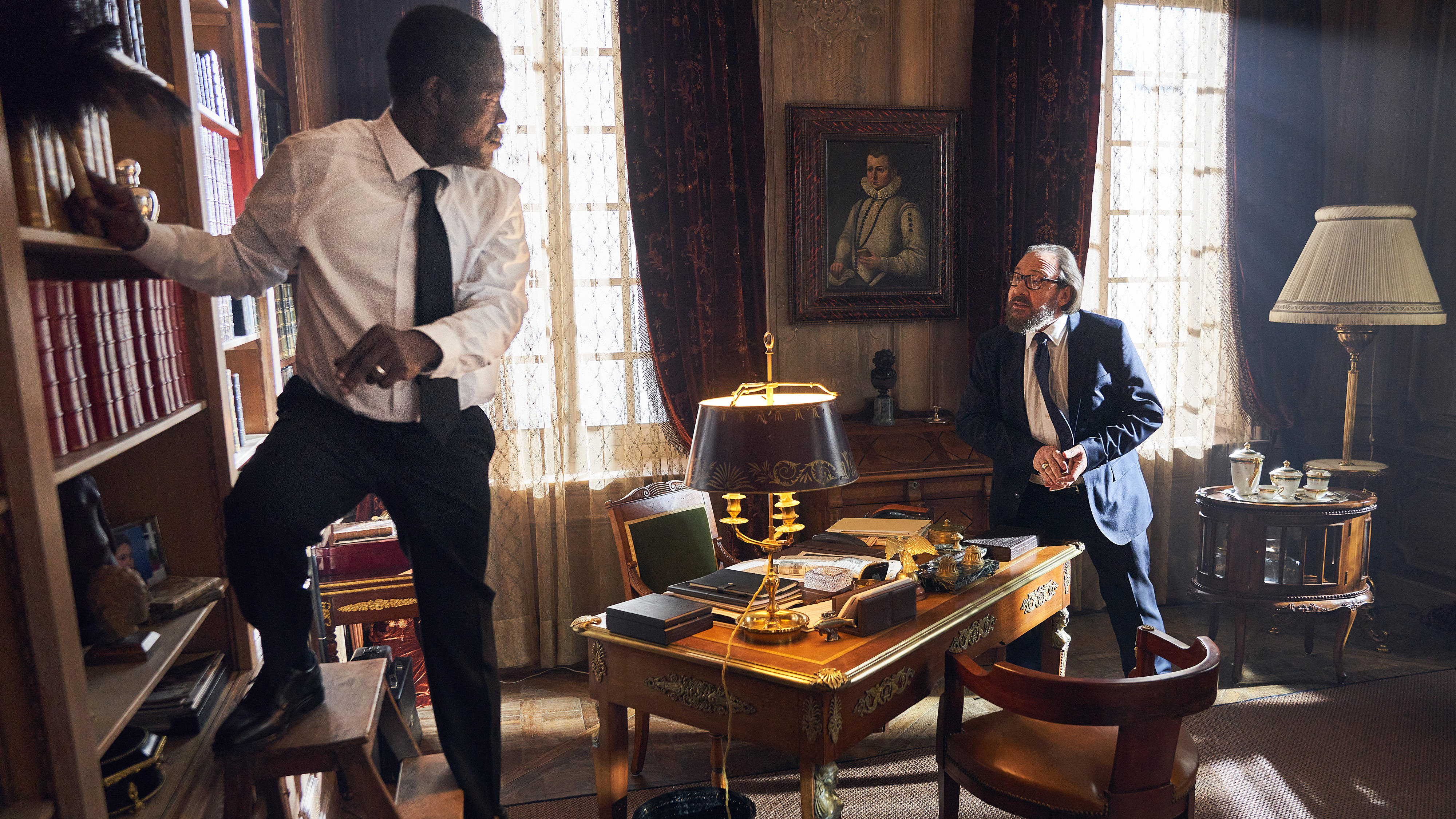
These flashbacks are brilliantly worked into the current-time story. We get this awful scene with Juliette while she's simultaneously descending the steps at the Louvre to auction off the necklace. She's even more stunning 25 years later (this is where I start to think that maybe the 25-year math doesn't add up, but I'll let that go), and Assane, seated in the crowd, watches her the whole way down.
He's not there as Assane, however. Or even as Luis Perenna. He's now there as Paul Sernine — yes, another Lupin anagram — and he's bidding on the necklace as part of the scheme to steal it.
This frames the rest of the first half of Lupin. The five parts tell their own bits of the tale, interwoven with context from the past, and how everyone fits into the present. Asanne and Claire met at school where he was the Black, immigrant new kid, and he rescued her from their classmates unwanted advances. The inspector from original disappearance from the necklace plays an integral role in discovering the larger plot 25 years later. Same goes for a journalist who was trying to expose the Pellegrini family a quarter-century ago, only to fail and lose her career in the process.
It all comes together in the fifth episode — which also cliffhangs its way into the second half of Lupin coming in the summer. We're not left wanting, however. Each episode has been carefully balanced with exposition and present-day action. And while you go through the whole thing with the understanding that everything's probably going to work out fine for our gentleman thief Assane/Perenna/Sernine every time he's in danger — this is a series, after all, and nobody's going to kill off the protagonist — it's still a great ride. So much so that it's worth watching a second time, because there's a lot going on. At time perhaps a little too much — there are a lot of characters in the two time periods, and Assane's multiple names don't alleviate that confusion any. There are the family dynamics with the Pellegrinis, and with Assane and Claire, and Assane and Raoul. There's the aging Inspector Dumont and the younger cops who are now tasked with finding Assane and the necklace. Juliette, perhaps, is still lingering.
And then there's Assane and Monsieur Hubert Pellegrini. An unstoppable force versus an immovable object. Sometimes one wins out. But it wouldn't surprise if the impending collision causes destruction for both of them.
We'll find out this summer when the final five parts of Lupin drop.
Phil spent his 20s in the newsroom of the Pensacola (Fla.) News Journal, his 30s on the road for AndroidCentral.com and Mobile Nations and is the Dad part of Modern Dad.
